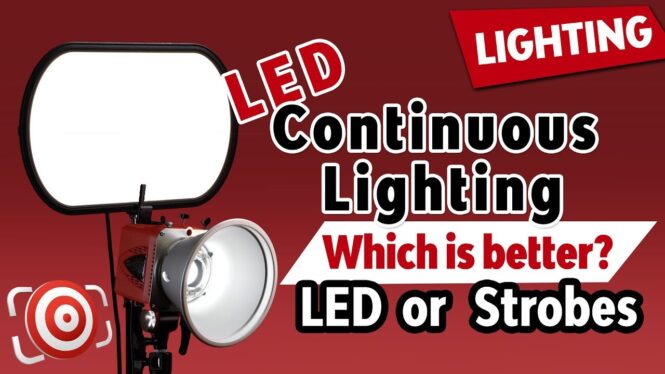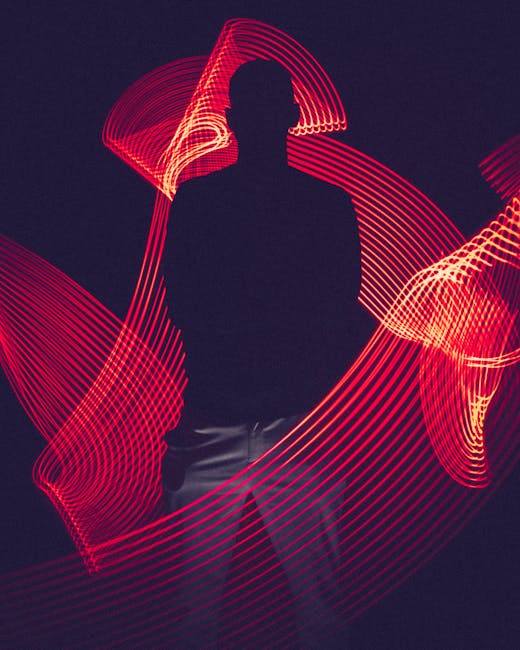
LED this, LED that, hybrid lighting, cri,
constant vs strobe….. are you getting a headache from all these headlines and videos
and kickstarter campaigns about these revolutionary new lighting gadgets? Is it causing you stress because you are going
to have to spend a ton of money to keep up your status as GEARtographer? Relax… first let’s break this down and look at
the practical differences between continuous LED lighting and strobes. Then over the next few videos I am going to
put some of these new LED lights to the test and show you how I would use them so that
hopefully – you can make better decisions before you run out and spend your hard earned
dollars.
Stay tuned. Hey gang! My name is Joe Edelman and my mission is to
help photographers like YOU to develop a solid understanding of the HOWS & WHYS behind great
photography so that you can achieve your goals as a photographer. LED Lighting for photography has come a very
long way in the last few years and all indications are that LED’s will be the future of photographic
and video lighting – and thats a good thing – I promise. The real questions right now are do you really
understand the differences between continuous lighting and strobes or speedlights? Why would you use one instead of the other? If you are a new photographer which type of
lighting should you start with? Strobes or flashes do just that – they flash. The light doesn’t stay on all the time. When you are using a flash as your light source
the duration of that flash will be anywhere from an average of 1/1000 of a second to as
fast as 1/10,000 second or more and most cameras will synchronize with the flash up to a shutter
speed of anywhere from 1/60th to 1/300th of a second and cameras that support high speed
sync will of course go even higher.
Just in case you are just starting out and
don’t quite understand the difference between flash duration and sync speed. The simple explanation is this. Flash duration is the amount of time the flash
is outputting light. Always very fast. As I mentioned generally between 1/1000th
of a second to 1/10,000th of a second or even faster The sync speed is the fastest shutter speed
that will allow your cameras shutter to open and the flash to fully illuminate your scene
before the shutter begins to close. The brightness of the flash units combined
with their extremely fast speed makes flash a great solution for situations where you
need to be able to stop fast action like this shot of my model and me in mid-air. Flash is also great for situations where you
want to overpower ambient light – like the sun and have your subject appear brighter
than the natural setting.
Flash is also ideal for situations where you
need or want to use articifial lighting but you can’t place it close to your subject. The higher powered flash units will be able
to reach and light your subject more efficiently like you see in this basketball arena that
I lit with four high powered studio strobes. Speedlight strobes work on batteries, external
battery packs and in some cases AC power. Studio strobes generally are designed to work
on AC power, but many new brands will work on external battery packs or even replaceable
lithium-ion batteries.
Speedlights are generally silent except for
the pop when they flash. Studio strobes usually have fans so they do
add a noise factor to your shoot. You can also find more modifiers for strobes
at this point, but I have no doubt that will LED’s will catchup as the technology takes
hold. You also will need a trigger to fire your
strobes remotely and a flash meter is the best way to set exposure. Constant LED lights – don’t flash. They are on all the time so what you see is
what you get. This can be a great asset for beginners to
lighting or even advanced professionals who are working with very intricate lighting setups. While the bigger studio strobes do come with
constant modeling lights – the modeling lights only approximate what will happen when the
flash fires – they don’t give you a truly accurate representation of the lighting. LED lights frequently have the built in ability
to modify the color temperature from tungsten to daylight balance. While this is a very useful feature – it does
come at the cost of reduced brightness. Because some of the led’s are dedicated
to tungsten white balance and some are dedicated to daylight.

LED lights are generally much lighter than
studio strobes and even some speedlights. They generate very little heat if any and
they make no noise since they don’t require fans. LED’s are generally AC powered but many have
the ability to run off on readily available Sony or Canon batteries. Because of the continuous light, you can use
your camera’s light meter to set exposure and you will not need a trigger to use the
lights remotely. So I mentioned before that strobes tend to
be more powerful. Here is a Savage Universal Edge Lit Pro LED
light – this is one of the lights that I will be talking about in an upcoming video. I have this set 5 feet from my lovely mannequin
Lola. The Edge Lit Pro is set at full power and
I am shooting with a Nikon D810, the Tokina 100mm f/2.8 lens at f/4 with a shutter speed
of 1/4th of a second and an ISO of 64. Here is Lola with a LumoPro LP180R speedlight
set at the same 5 foot distance at full power and my settings are f/8 with a shutter speed
of 1/250th of a second and an ISO of 64.
Here is the same set-up with a Paul C Buff
DigiBee DB800 studio flash still at 5 feet. This is a 320watt second flash also at full
power and my settings are f/20 with a shutter speed of 1/250th of a second and an ISO of
64. Now if you think that this proved the LED
light is a bad idea – definitely not – in fact – just the opposite. If I move this Edge Lit panel to 3 feet from
my subject I have a light source that is broader then my speedlite or studio strobe and I can
shoot at an aperture of f/4 at 1/60th of a second and an ISO of 320. Now I could go on for another 20 minutes splitting
hairs on the technical details – but you know that’s not my thing.
I will leave that to the techtographers. Let’s jump to the part where we talk about
what does it make the most sense for you to buy. The simple reality is that you will not find
one light that is best suited for every situation you will encounter as a photographer. As I have shown you – there are pros and cons
to both lighting systems. I actually consider myself lucky that I learned
portrait lighting with those cheap silver reflectors and 150 watt bulbs mounted on top
of light stands. It made it easier to learn how to see light
– because the light was alway on. And it forced me to learn how to really see
and manipulate light because the light quality from those cheap silver reflectors is horrible. If you are new to lighting and plan to shoot
people like I do or even products, I would whole heartedly encourage you to start with
LED lights. The constant light sources will allow you
to really see what you are doing and will definitely help you develop your lighting
skills much faster. And for you portrait photographers – here
is a huge bonus that you get with constant LED’s… studio photographers have a bad
habit of working in slightly darker studios so that they can see the effects of their
modeling lights.
The problem with that is that the modeling
lights really aren’t very bright so your subjects pupils expand to gather more light. The result is that you see less of the iris
and less color in the eye. Using LED lights for your portrait lighting
will generally cause the pupils to contract which allows you to see more of the iris and
more color. Some of you are going to ask about the new
LED flash combos and if they are worth the money. In my opinion – at the time of this video
– they are gimmicks and definitely not worth your hard earned money. If you are a geartographer and the GAS is
killing you – go for it – they’re interesting, but for practical purposes, they are too small
and way too expensive.
You can actually save yourself money by owning
separate flash and LED systems compared to purchasing the few combination lights that
are currently hitting the market. Please remember the newest gear and the most
expensive gear don’t make you photography better. Only you can do that. Purchase your gear based on your real needs. Next up in the LED lighting series I am going
to take a look at a cool new modular LED system called Spekular. Until then, I hope you found this useful. Please hit that thumbs up and subscribe so
that you don’t miss any videos and until next time go pick up that camera and shoot
something because your BEST shot – it’s your NEXT shot, so keep learning, keep thinking,
keep shooting. Adios!.

